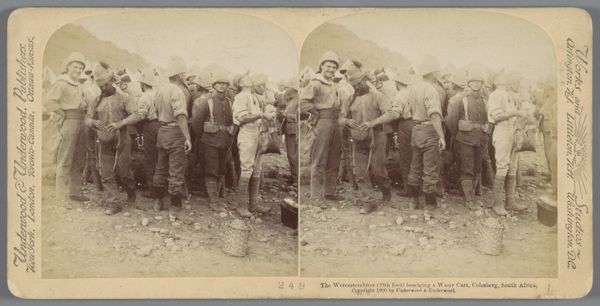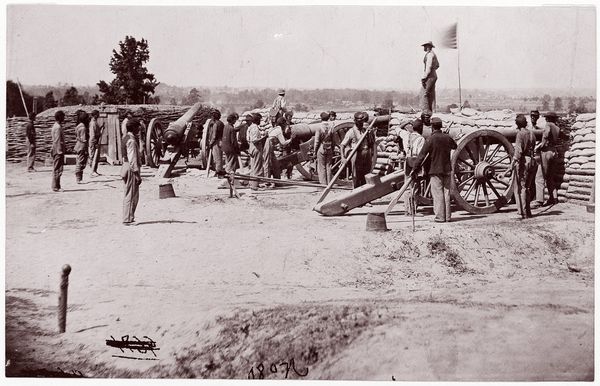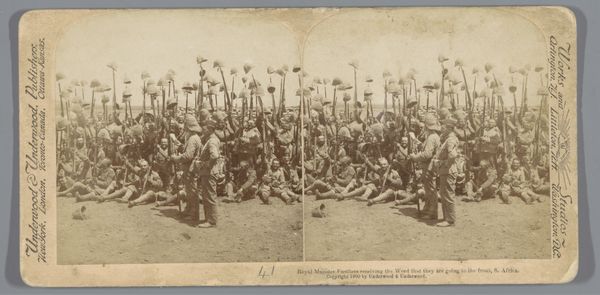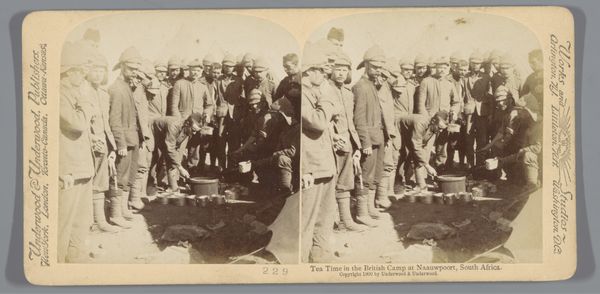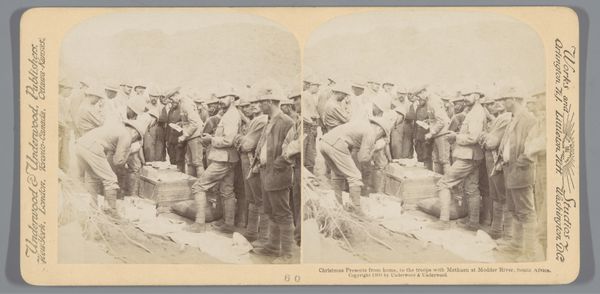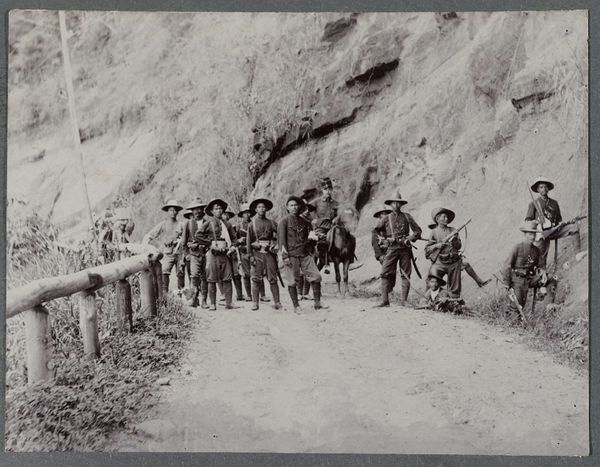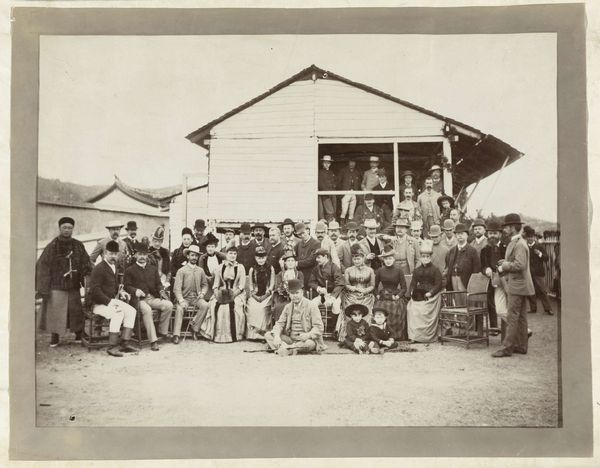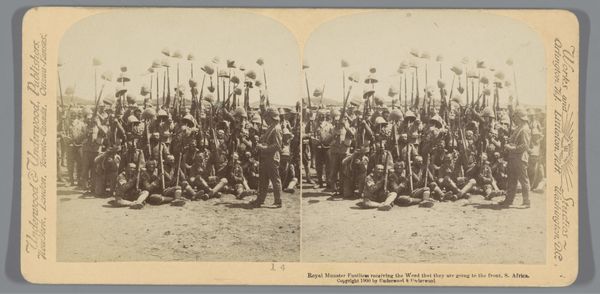
Military Telegraphic Corps, Army of the Potomac, Berlin, October 1862 1862
0:00
0:00
photography, gelatin-silver-print
#
portrait
#
war
#
archive photography
#
photography
#
historical photography
#
group-portraits
#
gelatin-silver-print
#
19th century
#
men
#
history-painting
Dimensions: Image: 6 11/16 in. × 9 in. (17 × 22.8 cm) Sheet: 10 1/16 in. × 12 in. (25.5 × 30.5 cm)
Copyright: Public Domain
Editor: This is "Military Telegraphic Corps, Army of the Potomac, Berlin, October 1862," a gelatin silver print from 1862 by Alexander Gardner. It's fascinating how Gardner captured what seems like a very staged, yet ordinary moment amid the Civil War. What can you tell me about it? Curator: Gardner's work is powerful because it highlights the institutional structures supporting the war. These aren’t battlefield heroes; they’re the men behind the lines, maintaining crucial communication. Notice the title includes "Berlin," referencing a community outside the capital of the USA - which serves to underline a community built solely upon communication for war. How does understanding that shift your initial perspective? Editor: It definitely reframes it. It's not just a photo, it's documentation of a logistical component and its public presence. There's a staged quality, like they’re aware they're constructing an image, almost a pro-war poster? Curator: Precisely. Early photography served both documentary and propagandistic roles. Gardner’s position within the socio-political structure of the Union Army allowed for distribution in publications and galleries. How does the photo contribute to the public understanding, or perhaps misunderstanding, of the conflict? Editor: By showing an organized, almost banal scene, it distances the public from the brutality of war. It almost sanitizes the conflict, creating a sense of control. Curator: Right. This image contributes to constructing a specific narrative of progress and order amidst chaos. It becomes part of the public record, influencing historical memory. What is your impression of photography’s early power, particularly considering war? Editor: It’s sobering. Images hold so much power to sway public opinion. I never considered the logistics as public image work! Curator: Indeed. Gardner’s photograph isn’t just a picture; it's an active participant in shaping the social and political landscape of the Civil War. Editor: Thinking about it in terms of shaping a narrative changes everything. Thanks!
Comments
No comments
Be the first to comment and join the conversation on the ultimate creative platform.
